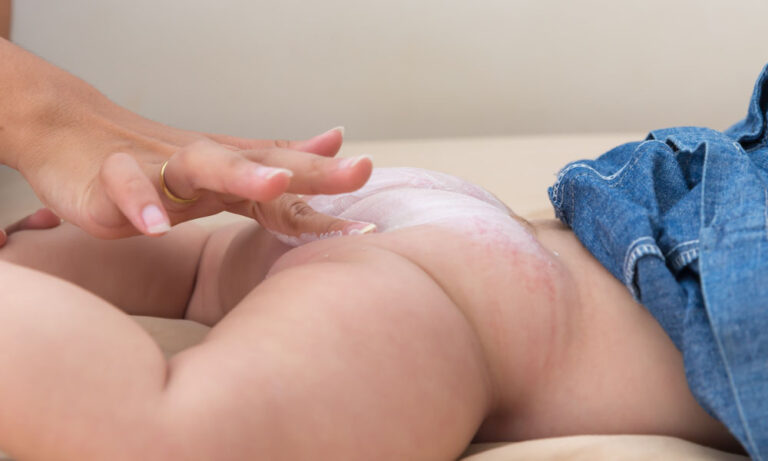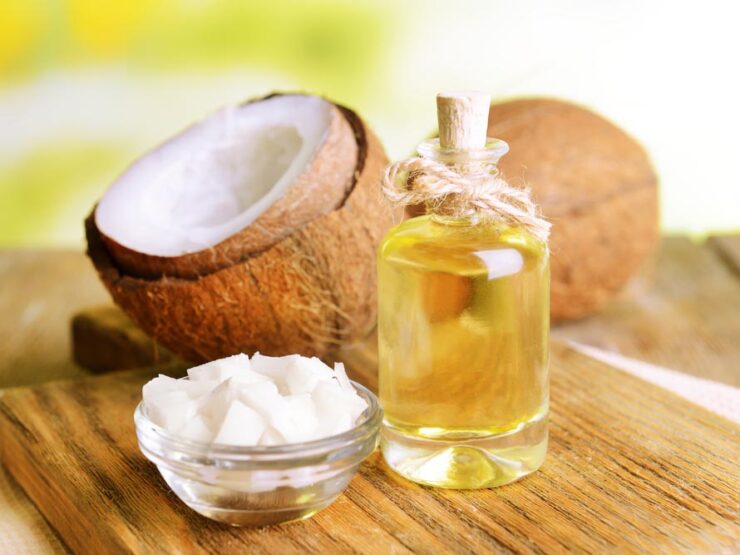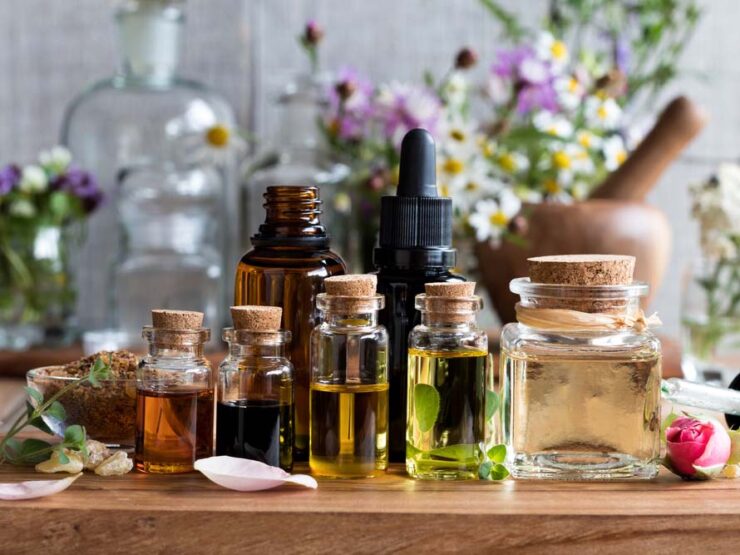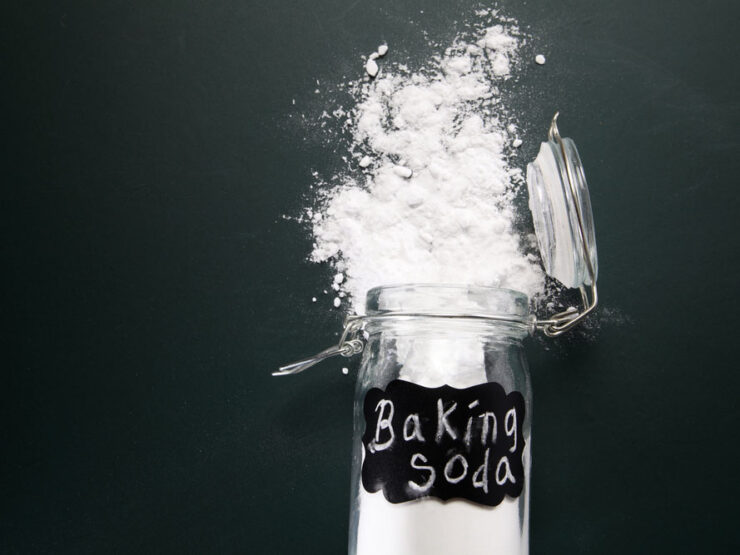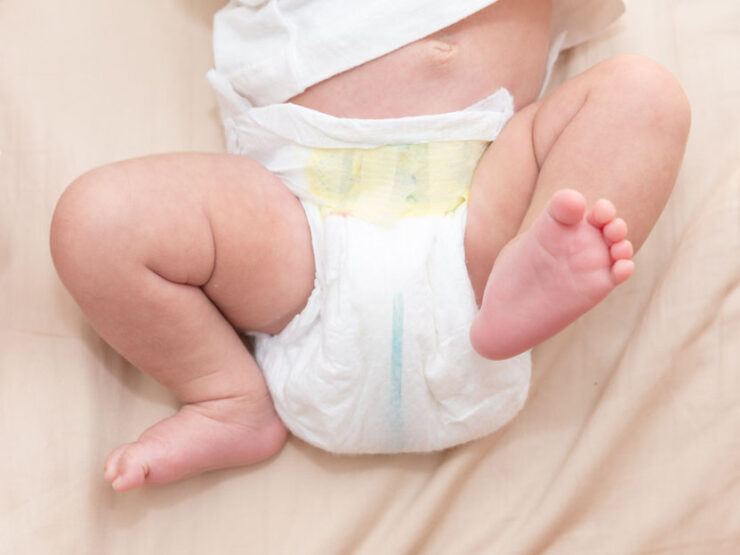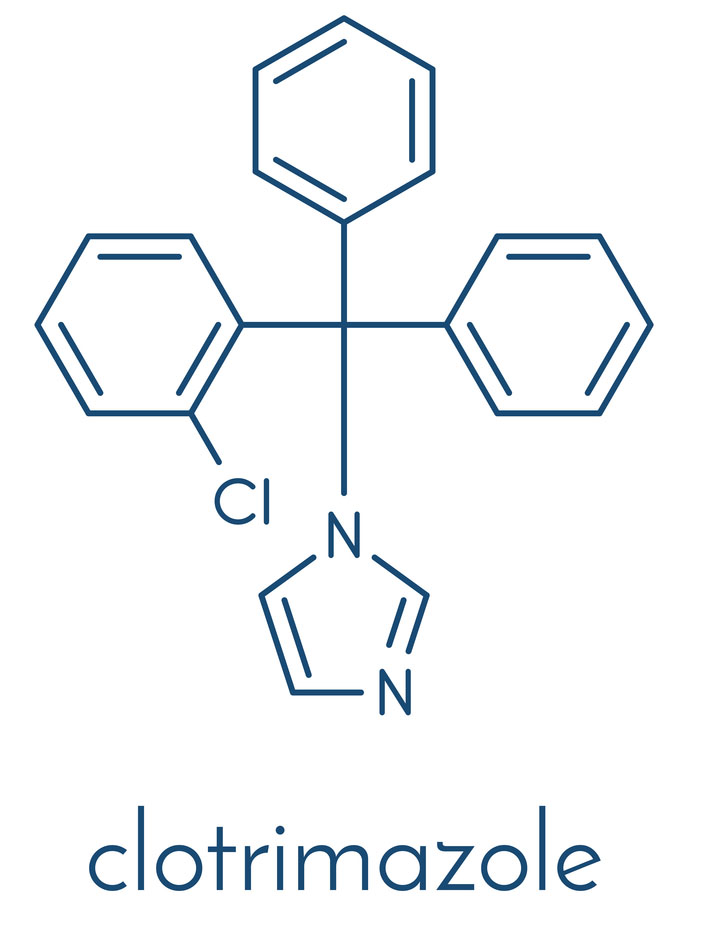Is diaper rash causing your baby to be irritable? What exactly is diaper rash? Rest assured, it’s not a serious condition! A little research will help end diaper rash issues. Refer to this article to learn more.
Diaper rash is a common condition that happens to both babies and adults with a primary cause of wearing a wet diaper for too long. It is mainly characterized by a red bumpy rash in the diaper area, and usually, it can be cured fairly easily. Luckily, there are natural home remedies for diaper rash such as coconut oil, apple cider vinegar, breast milk, petroleum jelly and many more which will be explained if you continue to read through this article.
The term diaper dermatitis is used to describe diaper rash which pertains to certain skin conditions that occur in infants, young children, the elderly and paralyzed individuals. Such a state is common with infants from the age of 0 to 2 years or for the whole period the child is wearing diapers. It starts with simple skin irritation and builds up to nasty rashes and infection.
As I said, diaper rash issues can mostly be cured with simple home remedies and a step by step process. Scan every section and find out more ways to solve the problems caused by diaper rash.
Top 10 Natural Home Remedies for Diaper Rash
1. COCONUT OIL
Coconut oil is a natural treatment for all types of skin problems including diaper rash. It has the antifungal and antibacterial property that can relieve symptoms of inflamed diaper rash such as redness, irritation, and itching.It can also moisturize skin and heal the diaper rash area.
It is a fact that no in-depth research has been done to examine the effect of coconut oil on the skin, but initial findings suggest that it is effective for healing wounds and sore areas of the skin. Coconut oil is safe for babies, but too much application may lead to skin irritations. Apply it moderately on the affected area and hope for a positive result.
2. APPLE CIDER VINEGAR
Diluted apple cider vinegar has antibacterial properties that can kill yeast infection in diapers. Candida is a type of yeast that grows in a yeast infected diaper which can result in severe sore spots and rashes in the affected area.
It can happen to adults, but babies are more prone to yeast diaper rash. Add a cup of apple cider vinegar to your baby’s bath water. Keep doing it for a week for a quick soothing healing process. If the diaper rash worsens, go to see the doctor as soon as possible.
3. BREAST MILK
A 2013 study published in the journal Pediatric Dermatology showed that breast milk has a hydrocortisone component which can naturally help to cure diaper rash. (Experts have advised to not use breast milk for a yeast diaper infection.) Breast milk also contains antibodies which can fight infection and diseases so it can be considered a risk free option for a natural cure for diaper rash. Gently apply some breast milk on your baby’s bottom. Avoid rubbing it on the skin as it can aggravate the skin more. Make sure that it is dry before putting on their nappy.
4. PETROLEUM JELLY
Petroleum jelly is made from natural oil which can heal wounds and moisturize baby’s skin. It also serves as a protecting layer between baby’s skin and diaper to isolate wetness. Petroleum jelly is safer than diaper creams because it is free from toxic materials which can add issues to other types of skin problems. Wash your baby’s bottom properly and dry it with a cotton towel. Gently apply a thin layer of petroleum jelly to the affected area. Keep doing it regularly for 5 to 7 days for a quick healing process.
5. ESSENTIAL OILS
Essential oils are extracted from plants which are commonly diluted and rubbed on skin for healing purposes. There are a few essential oils that can aid in curing diaper rash such as tea tree, frankincense, lavender, chamomile and clove which are also the top 5 crucial oils for diaper rash in babies.
The safe dilution ratio for babies older than 3 months is .5 to 1 percent and 2.5 to 10 percent on adults according to the National Association of Holistic Aromatherapy (NAHA). Birch or wintergreen essential oils should be avoided because they are rich in methyl salicylate and peppermint which can cause intense skin irritation. Performing a patch test is strongly advised before fully introducing essential oils to your baby’s skin to guard against any allergic reaction.
6. CORNSTARCH
Cornstarch is a highly absorbent substance which readily absorbs oil and moisture, and it can help to keep your baby’s skin dry and fresh throughout the day. It also works the same way as baby powder and does not cause damage to the skin.
With the current controversy regarding certain baby powders in mind, natural cornstarch may well be a safer and less worrying option.Sprinkle cornstarch on your baby’s bottom or make a paste and apply gently on the affected area. After a few days, the bumps will start to dry. Cornstarch is also talc-free and safe to use.
7. OATMEAL
Oatmeal has antioxidant properties which fight skin irritation and inflammation such as diaper rash. It also contains saponins and lipids which cleanse sensitive skin (which is particularly useful for the backside area with diaper rash) and moisturizes it and protects it from yeast infection. It also helps to soothe pain which can allow your little one calm down a little and sleep better.
For a soothing solution to the irritation mix 1 tablespoon of oatmeal into your baby’s bath water. Allow your baby to soak in the tub for 10-15 minutes while gently rubbing some oatmeal on her skin. Give your baby an oatmeal bath once a day or more as long as the pediatrician recommends it.
8. ALOE VERA
B-sitosterol and vitamin E are a few components of aloe vera which help to treat diaper rash. It can also help to maintain the moisture level and is suited for sensitive skin for preventing diaper rashes and other skin irritations.A 100 percent aloe treatment enables your baby’s skin to breathe while fighting bacteria and fungus.
Apply aloe vera gel on your baby’s bottom 2 to 3 times daily. You can also make your own aloe baby wipes in order for you to better control the ingredients and guard against any unnecessary additives. A good aloe Vera treatment will mean that diaper rash will be likely to heal in a few days.
9. BAKING SODA
Sodium bicarbonate or baking soda neutralizes the acid and balances the PH of your baby’s skin which will help fight microbes that cause diaper rash. It is also an effective way to kill bacteria on your baby’s skin and promotes quick healing.
The only possible drawback is that too much baking soda exposure or intake can lead to a condition called alkalosis and should be avoided at all costs. Try adding baking soda to a warm baby bath for a relaxing, healing soak. Bath her daily with diluted baking soda. Only use up to 2 tablespoons of baking soda for babies and young children.
10. EPSOM SALT
Epsom salt solution serves as a natural antiseptic and can help to fight the diaper rash infection. It also contains magnesium sulfate which softens skin and reduces any irritation. Using Epsom salt in your baby’s bath can also help her relax while soaking in the bath and enhance her mood.
Experts recommend to pour up to half a cup of Epsom salt into a baby’s warm bath for a maximum soothing effect. It is best to allow her to soak in the bath for around 10 to 15 minutes. Try doing this regularly for an enjoyable and quick healing process.
Common Causes of Diaper Rash
ALLERGIC REACTION TO DIAPERS
Certain brands of diapers can have an absorbent gel component that can cause an allergy to baby’s skin. Some diapers also have dyes and fragrances in their content list which can cause the allergy to get worse. A diaper rash can also sometimes be mistaken for a food allergy so if in doubt check with your doctor.
A diaper allergy usually manifests as red, slightly swollen blotches on the skin which makes it sensitive to the touch. A constant irritation is the typical symptom of diaper rash. The rash is also likely to be a reaction to diapers, wipes, laundry detergent, soap, and lotion, so always make an informed choice when purchasing here products.
BACTERIAL OR YEAST INFECTION
Yeast and bacteria are the common cause of diaper rash which results in skin disruption and weakening of the defense mechanisms of the skin. Bacteria can cause a secondary infection on the skin which can manifest in nasty yellow scabs, pimples, and pus.
This can also develop into a painful red lump.Yeast diaper rash is characterized by a dark red rash with a distinctive border with additional small bumps or pimples. The affected area can also be raw, tender, and weepy with many pimples; additionally the skin may develop flaky and scaly appearance.
FOOD ALLERGY
The frequency of your baby’s bowel movement changed when she started eating solid food. Acidic food such as citrus and tomato-based sauce may be one of the reasons why your baby has developed diaper rash. It can also make the skin irritated and sore.
A food allergy is also characterized by redness and the visibility of a sore ring around the baby’s bottom. You should always make sure to keep her diaper rash area dry after washing it to allow this to heal properly.
WET DIAPERS
Unfortunately, most brands of diapers always tend to leave moisture behind on your baby’s skin. An unchanged nappy often leads to a rash due to the mixing of bacteria from urine and stool which breaks down to ammonia that gives sensitivity to the surface of the skin.
This is also the reason why children who have frequent bowel movements have a higher susceptibility to diaper rash.Wet and tight diapers can also create friction and chafing which leads to rubbing on the skin and to diaper rash. It can weaken the protective skin barrier which can result in rashes. Constant wiping and cleaning on the diaper are can also irritate your baby’s skin and worsen the effects of diaper rash.
SENSITIVE SKIN
Babies with existing skin conditions are very likely to get diaper rash. Eczema is a skin condition that might be the reason why your baby is feeling irritable because of a diaper rash. Skin irritation can affect the areas of diaper rash and will likely also lead to other serious skin conditions.
Sensitive baby skin has a low tolerance level and can easily be irritated by toxic ingredients in baby skin products and diapers. The irritation will build up and can lead to diaper rash issues. Pre-existing skin conditions on top of diaper rash can cause serious skin problems which can jeopardize your baby’s health and complicate treatment.
What Are the Symptoms of Diaper Rash
Generally, diaper rash appears as redness on the skin with a shiny and pimply spot which can be seen at the diaper areas such as bottom, upper thighs, and genitalia. It can also be associated with an infection which usually manifests in red skin, blisters, pus, and swollen diaper area. Babies suffering from diaper rash can be especially irritable and will cry a lot especially during nappy change time.
Three Common Types of Diaper Rash
RRITANT DERMATITIS
Irritant diaper dermatitis is the most common type of diaper rash which is caused by direct contact with a substance or an allergic reaction to it. Irritant diaper dermatitis occurs in bottoms, upper thighs, genitalia and other parts which are in connection with the allergy-causing substance. This type of diaper rash usually happens within minutes to hours of exposure to the allergy-causing substance which appears like:
- A red rash
- Severe itching
- Dry, scaly and cracked skin
- Bumps and blisters with crusting
- Swelling
YEAST DERMATITIS
Yeast dermatitis is caused by Candida albicans, a type of yeast or fungus. It begins with softening and weakening of the skin tissue around the anus which appears red and elevated with visible fluids under the skin. A Candida infection may also be joined with Candida mouth infection (thrush) which can infect the mother’s nipple or areola.
These are the symptoms of yeast dermatitis:
- A red rash with a slightly raised border
- Scaly areas (scrotum and penis, labia and vagina)
- Pimples, blisters, sores filled with pus
- Satellite lesions or small red patches blending with other spots
- The rash is only in the diaper area.
BACTERIAL DERMATITIS
Bacterial dermatitis is a type of diaper rash due to the bacteria Staphylococcus aureus (Staph) Sand Group B Streptococcus (Strep) which occurs when skin is already irritated or has abrasions. The condition is also known as impetigo which can be treatable with the use of topical ointments.
The main symptom of impetigo is:
- Itchiness and red blisters in the diaper region
Complications of Diaper Rash
- Skin maceration and abrasion in the diaper region can lead to infection and other skin diseases.
- Secondary bacterial infections are sometimes caused by aerobic and anaerobic organisms.
- Diaper rash can develop into psoriasis which can manifest as a psoriatic eruption of papules and plaques.
- Jacquet dermatitis is also a complication of this skin condition which is mainly an irritant chafing type diaper rash.
- Secondary bacterial and yeast infection.
- Granuloma Gluteale Infantum (GGI) is a rare condition which manifests as cherry red nodules in the diaper area.
How to Prevent Diaper Rash
FREQUENT DIAPER CHANGE
Soiled and wet nappies are the leading cause of diaper rash. Dry your baby’s bottom using a clean towel and do not leave her wearing an unchanged nappy for too long. Frequent diaper changes and clean diapers can avoid diaper rash and other skin problems.
KEEP NAPPIES LOOSE
Tight diapers prevent airflow which leads to sweat build up and wet diapers. Looser nappies can help prevent friction and chafing. A loose diaper can stop a rash developing and will help ensure proper air flow.
USE UNSCENTED PRODUCTS
Scents can cause or worsen diaper rash. Use lotions and other skin products that are scent free and hypoallergenic. Mild soaps and baby wipes that do not contain alcohol are advised.
SWAP DIAPERS
You can try switching to a different diaper brand if you feel like it is giving your baby diaper rash. Cloth made diapers are less absorbent but can ensure better air flow which can lower the risk of diaper rash. You should always keep looking and researching for alternative diaper brands that will suit your baby’s comfort.
USE DIAPER OINTMENT
Diaper ointment can help cure your baby’s sensitive skin. Natural diaper ointment typically includes zinc oxide and petroleum jelly which can protect and heal the skin. There are various creams available which can also serve as a skin moisturizer and help the soothing process.
USE SOFT WIPES
Dermatologists recommend that you use soft baby wipes and washcloths for wiping your baby’s bottom. Rough wipes and washcloths can irritate her skin which can cause or worsen diaper rash. Only use wipes that are clinically proven and have a mild effect mild to the skin surface.
CLEAN CLOTH DIAPERS PROPERLY
Double rinse and pre-soak soiled cloth diapers properly. It is advisable to use mild detergents that are dye free and fragrance-free. Do not use fabric softeners as it may have an adverse effect and feel irritating to her skin.
LET YOUR BABY GO AU NATUREL
It is best to allow your baby to be free from nappies for an hour or so a day. This will allow the diaper area to dry and breathe. This is also one of the most proven and effective ways to prevent diaper rash in babies.
SEE THE DOCTOR
You should consult a doctor if you ever notice something unusual on your baby’s skin. Do not be afraid to discuss any worries with your doctor as early detection can always prevent diaper rash issues and other skin conditions. Be aware of the signs of infections such as fever, blisters, and pus as they are likely to be symptoms of more severe skin conditions.
What to Look for in Diapers (to avoid diaper rash issues)
HARMFUL SUBSTANCES
Drying agents, dyes and fragrances are potentially hazardous substances which are sometimes used in diapers. Dioxin and sodium polyacrylate are attributed to health problems and chemical burns. Parents should be careful to know exactly what the substances are that are used in the diaper.
SCENTED OR UNSCENTED
Scented diapers are always a top choice for parents, but the truth is, it can sometimes give your baby some rashes due to the fragrances used. Scented diapers are not safe for babies with skin allergies. Unscented diapers are more advisable than the scented one as it is safer for babies and less likely to cause irritation.
COMFORT
You should always take care to choose a diaper that is comfortable and non-irritating on your baby. Take note that it should not be too tight nor too lose. Tight diapers can cause chafing and friction while loose diapers are uncomfortable.
EASY TO USE
Consider the degree of usability. Do not choose a diaper that is too complicated to put on as you do not want to leave your baby soaking in her soiled nappy for a longer time. Wet nappies are the primary cause of diaper rash so it is advisable to use a diaper which is easy to change so you can keep baby dry and comfortable.
HEAVY USE
Babies who have heavy bowel movements are frequent or heavy “wetters.” When choosing a heavy use diaper, consider how long can a diaper last on your baby’s bottom without giving her a rash. There are also “Specialty Diapers” you can purchase from stores which could be expensive but with good quality.
BUDGET
Money is always a concern for parents who purchase baby products. Still, go for reasonable prices with guaranteed quality. Do not be misled by any false advertising, as cheaper baby products can be a false economy and cost more in the long run.
Common Prescription for Diaper Rash (do not purchase unless prescribed)
CORTICOSTEROID (topical)
Corticosteroids can lessen inflamed areas such as swelling, redness, itchiness and other allergic reactions. It is often used for skin diseases like severe allergy, asthma, and arthritis. It is a powerful medication and has side effects which can be very serious.
HYDROCORTISONE
Hydrocortisone is another anti-inflammatory agent which can cure skin conditions like eczema, psoriasis and other anti-immune diseases. It helps diaper rash by reducing the redness, itch, and swelling which is giving your baby discomforts. Topical hydrocortisone comes with cream, lotion, spray, gel, foam, and stick.
NYSTATIN
Nystatin is a fungal medication which prevents fungus from thriving on the skin. Nystatin topical is mostly used for a skin infection. It advised not to use the treatment if not prescribed by the doctor.
CLOTRIMAZOLE
Clotrimazole is a medication for candidal infection which is subsumed under yeast dermatitis. Clotrimazole can cure yeast rash and other related diseases. Apply cream on the affected area for 2 to 3 days.
MICONAZOLE
Miconazole is another type of antifungal medicine and is suited for treating yeast rashes. It is typically paired with zinc oxide. Miconazole is also used to treat various skin diseases such as athlete’s foot and jock itch.
KETOCONAZOLE
Ketoconazole aid in preventing fungus growth which is a symptom of yeast dermatitis. It is also used to treat infections such as ringworm and certain kinds of dandruff. Ketoconazole (topical) is generally used in diaper rash treatment.
Diaper Rash Trivia
- Diaper rash can occur on any body part to which the nappy content can leak too. Do not make her nappy tight nor loose to avoid rash and skin irritation.
- Baby wipes can aggravate diaper rash. Why? Wipes have a dangerous substance that can irritate baby skin and can cause infection.
- Teething is not a cause of diaper rash.
- Too much diaper cream can worsen the rash. Put on the required amount on the diaper rash area to avoid film on the nappy lining which can reduce efficiency.
- Fifty to sixty percent of babies suffer from diaper rash which is the most common skin condition in infants. Adults can experience diaper rash too.
- There are a few types of diaper rash relief such as creams, ointment, and paste.
See The Doctor If
- Your baby has a fever due to her skin condition.
- Your baby is crying a lot during a nappy change.
- The rashes occur within the first week of birth.
- Unsuccessful treatment after two to three days.
- There is an appearance of fluid-filled bumps (pustules) and honey-colored crusty areas which might be a bacterial infection.
- You notice a red rash with white scales and lesions.
- You notice signs of secondary infection.
Do you Want to Avoid Diaper Rash?
Keeping your baby free from diaper rash or any skin conditions can be simply effortless. These useful tips can help you:
- Keep her clean and dry.
- Avoid using baby wipes.
- Change her nappy as soon as possible.
- Do not use scented diapers.
- Don’t use too strong detergents for washing soiled nappies.
- Use mild soap for washing her bottom.
- Switch to a cloth diaper as it has a lower risk of diaper rash issues.
- Use barrier cream to avoid diaper rash.
- Educate yourself on how you can deal with diaper rash in babies.
- See the GP if you think your home remedy treatment is not working for your baby.
Final Thoughts
Diaper rash or diaper dermatitis is a common condition that occurs during infancy until the period your baby stops wearing diapers. It can also happen to adults. Diaper rash regions are thighs, bottom, and genitalia while other areas where diaper content leaks can be affected. Diaper dermatitis comes in different types which are all curable in aid of scientific and home remedy treatments.
Natural home remedies for diaper rash is still the best option for diaper rash treatment because it is convenient, easy to find and has no harmful side effects. It is also essential to identify what is causing the diaper rash before choosing any home remedy treatment. Lastly, home remedies are popular and effective and will make you feel more inclined to use them because it is safe and free from any risky chemicals or perfumes.
You can rest assured, diaper rash is a curable condition it is a question of finding the most effective treatment. While using natural home remedies, it is best to try all options until you find the best and most effective mixture of products for your baby. It is a fact that different home treatments have a different level of effect on different babies.
Related Questions
Can I use black tea for diaper rash treatment?
Yes, you can use black tea for diaper rash treatment as it contains antioxidants and components that can reduce inflammation. Black tea is also safe to use. Mix it in your baby’s bath and soak her for 10 to 15 minutes.
What are the home remedies for a baby rash on face?
Baby rashes on the face are cured with simple home remedies such as ice cubes, cornstarch, breast milk and oatmeal which can all be prepared quickly. Ice can soothe pain, and you can apply cornstarch or milk to your baby’s face for treatment. Proper hygiene can also lower the possibility of any skin condition such as facial rashes in babies.
What are the home remedies for a baby rash on the body?
Body rashes on babies can be easily cured with home remedies like oatmeal, baking soda, tea, aloe vera and cold compress which can naturally heal or moisturize skin. The mentioned above remedies can also be prepared differently according to your taste. Rest assured, no side effects will harm you or your baby with this treatment.

